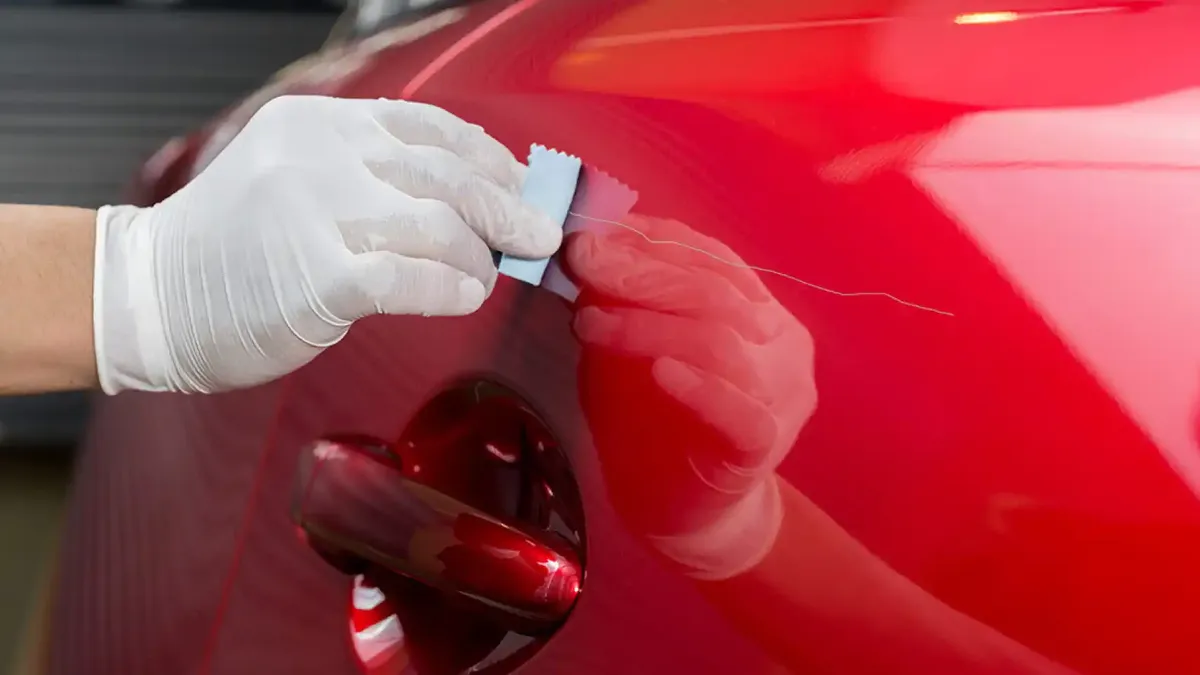Scratches on a car can be a frustrating and unsightly problem for any car owner. While taking your car to a professional for repairs can be expensive, it’s possible to remove scratches from your car at home with the right tools and techniques. In this guide, we will go over the steps needed to remove scratches from your car, including how to determine the type of scratch and the tools and materials needed to complete the repair.
Understanding the types of scratches
Before you begin the repair process, it’s important to understand the types of scratches that can occur on a car. There are three main types of scratches:
Clear coat scratches: These scratches occur on the outermost layer of the car’s paint, the clear coat. They are usually the easiest to fix and can be removed with a simple polishing compound.
Primer scratches: These scratches occur on the layer of primer that is applied before the paint. They are slightly deeper than clear coat scratches and may require a touch-up paint to repair.
Paint scratches: These scratches penetrate through the paint and into the metal of the car. They are the deepest type of scratch and may require professional help to repair.
Tools and materials needed
Here are the tools and materials you will need to repair scratches on your car:
- Microfiber cloths
- Polishing compound
- Touch-up paint (if necessary)
- Sandpaper (2000-grit)
- Water
- Rubbing alcohol
- Wax or sealant
Preparing the car for repair
Before you begin the repair process, it’s important to prepare the car for repair. Start by washing the area around the scratch with soap and water, then dry it completely. Next, use rubbing alcohol to clean the area and remove any debris or wax buildup.
Fixing minor scratches
For clear coat scratches, start by applying a small amount of polishing compound onto a microfiber cloth. Rub the compound onto the scratch in a circular motion until the scratch is no longer visible. For deeper scratches, use 2000-grit sandpaper to gently sand the area around the scratch until it is level with the surrounding paint. Then, use the polishing compound to remove any remaining scratches.
Fixing deeper scratches
For primer and paint scratches, you may need to use touch-up paint to repair the damage. Start by applying a small amount of touch-up paint onto the scratch using a fine brush. Allow the paint to dry completely, then use 2000-grit sandpaper to sand the area until it is level with the surrounding paint. Finally, use the polishing compound to remove any remaining scratches.
Polishing the repaired area
Once the scratch has been repaired, it’s important to polish the area to restore the shine of the paint. Apply a small amount of wax or sealant onto a microfiber cloth and rub it onto the repaired area in a circular motion. This will protect the paint from further damage and help it to maintain its shine.
Conclusion
Removing scratches from your car can be a daunting task, but with the right tools and techniques, it’s possible to repair minor scratches at home. Remember to determine the type of scratch before beginning the repair process, and always prepare the car properly before starting the repair. With a little bit of effort, your car can look as good as new.
Zeeshan is a seasoned tech expert and senior writer at Teckrr.com. With over 10 years of experience in tech journalism, he brings insightful analysis and up-to-date information on the latest tech trends. Zeeshan holds a MBA degree from Business and Tech University and is known for his engaging writing style and ability to demystify complex tech topics. Stay connected with the cutting-edge of technology through his expert lens.

Leave a Reply